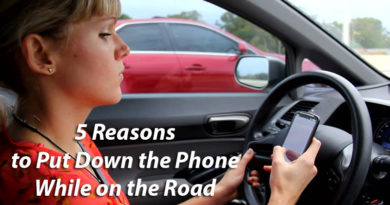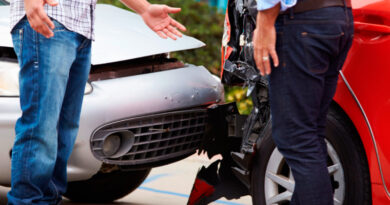17 Important Road Safety Rules to Teach Your Kids (and to Follow Yourself)
As your children age, parents will teach their children how to interact with roads, vehicles, and motorcycles, but when they become teens, those skills are essential when learning how to drive. It’s important to teach your children how to drive safely by teaching them early on. Children learn by example, so you need to practice defensive driving yourself to keep them safe.

Steps to Take After a Car Accident
Teaching your children what to do after a car accident is important, even if they never experience one themselves. It’s hard to imagine your children getting hurt, which is why most parents will avoid this topic, but preparing them for the worst will only benefit them.
- Advise them to stay calm and not leave the scene of the accident.
- Stress the importance of checking their surroundings before leaving the vehicle.
- Teach them why they should call an ambulance and police officer after an accident.
- If no one is injured, they can exchange insurance and file a police report.
- If they are injured, explain that they can go through their insurance or get a lawyer.
- Taking pictures and limiting discussion of the incident can help them legally.
You don’t have to speak to your children about this mature topic until they’re much older.
How to Teach Your Children and Teens Road Safety
Start With Neighbourhood Rules
While your child is still in a stroller or holding your hand, you should teach basic road rules within your neighborhood. If you live in a suburb, you can ease your children into proper road etiquette, but you must instruct them immediately if you live next to a busy street or highway.
Your children should have a grasp on the following road safety rules before they’re 5:
- Know Your Signals: Green means go, red means stop, walk means walk, etc.
- Stop, Look, Cross: Stop at all roads or lots, and look both ways before crossing.
- Pay Attention: Don’t stop looking for cars while crossing the street.
- Never Run on Roads: Teach children to stay calm while crossing the road.
- Never Cross Bends: Bends are blindspots, which could cause an accident.
Evolve to Pedestrian Rules
Until the age of 11-12, children need active adult supervision when crossing driveways, roads, and car parks. However, you’ll want to ease them into walking around safely while alone. At the same time, instruct them how not to act while you’re driving.
Your children should have a grasp on the following road safety rules before they’re 10:
- Crossroads/Pedestrian Crossing: Cross at crossroads and marked crossings.
- Use Sidewalks: Never walk on the road, only use walking paths and sidewalks.
- Inside Vehicle Safety: Don’t stick hand out of a vehicle or distract driver, buckle up, etc.
- Outside Vehicle Safety: Get out of a car on the curbside, don’t approach moving cars.
- Ensure You’re Seen: Wear reflective clothing at night, wave to vehicles before passing
- Bicycle Safety: Wear a helmet, service the bicycle, use bicycle lanes, etc.
Practice Safe Driving in Your Car
Children will learn how to drive by watching you, so if you make frequent driving mistakes, they may continue to perform these actions. Even if you tell them not to do it, they still see that your driving doesn’t get you into accidents, translating into safe driving behaviors in their head.
Your children should have a grasp on the following road safety rules before they’re 16:
- Basic Operations: Avoiding distractions, safe turns, signaling, etc.
- Parking: Parking within the lines, 90-degree, angle, and parallel parking.
- Interacting With Others: Defensive driving, managing road rage, distancing.
- Advanced Skills: Driving in wet conditions, towing, night and freeway driving
- The Vehicle Itself: Dashboard, seat belts, tires, gas, cleaning, checking fluids, etc.
Emergency Response: Changing a flat, high winds, downed power lines, accidents.



